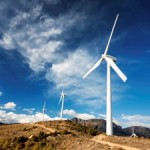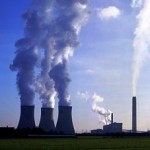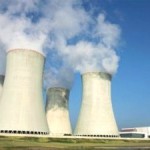The overall results from PwC’s analysts are a stark warning for world leaders attending the UN Summit on Climate Change in New York in two weeks (Sept. 23). Five countries increased their carbon intensity: France, US, India, Germany, and Brazil.
Overall, for the sixth successive year of the PwC Low Carbon Economy Index, the global carbon target has been missed. The target is based on projections of economic growth and the budget set out by the IPCC which advised the maximum amount of energy related emissions the world can emit this century to limit global warming to 2°C.
At current “burn rates”, this century’s entire carbon budget will be used up within 20 years. To avoid this, PwC’s climate change analysts estimate that the global economy would now need to cut its carbon intensity by 6.2% a year, every year from now to 2100, more than five times its current rate (1.2%).
Countries are due to complete negotiations on a potentially legally binding global agreement on climate change in Paris in December 2015.
Click here to read/download the Full Report.
Source: PwC.
Notes:
1. PwC’s Sustainability & Climate Change Team includes over 100 UK based specialists in climate science, policy, energy & renewables, climate & business strategy and carbon trading, and 800 globally.
2. Under the UN climate negotiations process, all countries are expected to put forward national pledges, with the collective aim of reducing greenhouse gas emissions globally to limit the potential for global warming to 2°C by 2100. PwC analysis outlines the timeline to achieve what is necessary including: Annual energy-related emissions in the G20 bloc need to fall by one-third by 2030 and just over half by 2050 to stay within the 2°C budget; In the G7, absolute carbon emissions need to fall by 44% by 2030 and 75% by 2050 compared to 2010 levels; For the E7, a carbon intensity reduction of 8.5% per annum is required to 2020, followed by further reductions of 5.3% a year to 2050 to stay within the 2°C budget.
About The Low Carbon Economy Index (LCEI)
The LCEI model considers energy-related carbon emissions, driven by a series of assumptions including economic growth projections, primary energy intensity and fuel mix share. The model covers energy and macro-economic data from individual G20 economies, as well as world totals. Details of the model structure are available in PwC’s first LCEI report. Data on estimating the required pledges are based on taking the IPCC findings on potential emission pathways, as described in Chapter 6 of the Working Group 3 in the AR5 series, and comparing that with the emissions data/projection in the LCEI model. Further sense-checks are also conducted against the UNEP Emissions Gap Report. An important caveat is that PwC has presented point estimates on required pledges and decarbonisation based on a series of assumptions, but in practice, pledges and decarbonisation rates can fall within a range due to modelling uncertainties and climate variability.














